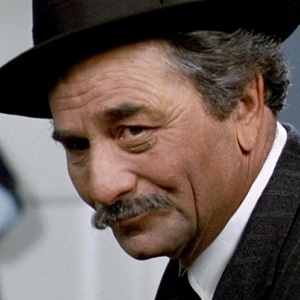
About the Book
-
Author:
- Maud Hart Lovelace
Cover Story: Classic
BFF Charm: Yep
Talky Talk: Easy, Breezy
Bonus Factors: Kooky Old Gramps, Minne-fuckin-sota, Life After Graduation
Anti-Bonus Factor: Alcott-Style Progressivism
Relationship Status: Like Spending Time With An Old Friend
Cover Story: Classic
The most recent release of this book takes (what I believe is) the drawing of Emily from the original cover. This was such an appropriate choice, because the original illustrations are not only charming but provide instant nostalgia and familiarity to all of us Betsy-Tacy readers. I am so pleased the publisher hasn’t tried to “sass” up these covers to make them look like new releases.
The Deal:
Emily Webster and the class of 1912 are graduating from high school. For Emily’s friends, it’s the beginning of a new chapter in their lives as they prepare to go to college. But not for Emily. Despite her love of learning and her academic achievements, she will be spending her next year at home. She is an orphan whose only living relative is her elderly grandfather and she feels it is her duty to take care of him. When her classmates leave home, Emily becomes lonely and depressed during her “lost year.” But with a little dedication, Emily eventually finds that learning can take place outside of the classroom and you don’t need college to grow as a person.
BFF Charm: Yep

Emily is more or less the embodiment of many of my personal social fears. She is by no means an outcast, but she has never been on the inside of a crowd either. Her role is that of the fringe friend — occasionally invited to parties or outings, but often left off the guest list. It’s not uncommon for her to hear her friends talking about something she wasn’t invited to — and she’s almost never invited to the exclusive girl-boy parties. Basically that social paranoia that many of us get (which why I adore the title to Mindy Kaling’s book — Is Everyone Hanging Out Without Me And Other Concerns) is a reality for Emily. And part of that is Emily’s own doing. She let’s everyone else do the talking and always defaults to the listener role. Plus, a lot of social status is (unfairly) based on whether goes on dates or gets courted — and Emily has little luck in that department.
So Emily’s journey is a very classic Coming of Age, in that we see her change both internally and externally. It’s a slow process, but Emily isn’t reinventing herself — she is just growing the confidence she always deserved to have. She proves that sometimes it’s good to be apart from the people who know you well — that sometimes you need to be around people with no set expectations of you. So while she might not be the most wild and exciting girl in the world, Emily’s got a good heart and would make a great friend. I would be happy to be her friend and treat her as an equal, not as the back-up friend. Her choice in men might make me want to smack her a bit (more on that later!) but we’ll get over it.
Swoonworthy Scale: 3
Emily spends most of the book hopelessly crushing on a royal juicebox of the first order. His name is Don and he and Emily are “friends” from the Debate Team. Which essentially means Emily is worth talking to at Debate, but in real social settings, Don completely blows her off. Some of the things Don does include (but are not limited to), negging on Emily, acting like he’s too damn good for anyone or anything, only spending time with Emily when no one else is around, ragging on Decoration Day and forcing Emily to take his school picture without even bothering to take one of hers in return (I mean, WHAT, seriously??!) The worst part is that Emily is totally aware that the things he does and says are total asshattery, and yet she likes him anyway. Which is why I wanted to smack Emily upside the head, until I remembered that in high school I had crushes on several variations of Don. Is it a requirement that all teenage girls have at least one crush on a guy who totally shits on them/won’t give them the time of day? Or did some ladies out there manage to possess some sort of common sense gene many of us seemed born without? That said, Don is the worst.
Luckily, Emily meets our Don-foil Jed. Jed is confident (without being cocky), compassionate, fun, smart and a total looker. So while there wasn’t exactly any sexy times (1912!), there was still some good old-fashioned courting.
Talky Talk: Easy, Breezy
Similar to L.M. Montgomery, Lovelace’s books often appear to be written for an audience much younger than the books’ protagonists. But unlike L. M., there are 90% less flowery descriptions to wade through. Which means Lovelace’s books are breeze to read through. But the simple language can still pack a punch. For example, when Emily is looking at a photograph of her mother:
For the first time the photograph seemed to take on reality. Her mother had been eighteen once, and she had graduated. She had known this strange feeling that something was ending which you have never really expected to end.
A strange feeling, indeed.
Bonus Factor: Kooky Old Gramps

Emily’s grandfather is maybe a little senile, but completely lovable. He is a Civil War veteran and loves going on and on about his time as a soldier. Plus, he loves Emily and is super kind-hearted — especially toward children.
Bonus Factor: Minne-fuckin-sota
If you read a single Lovelace book and don’t want to live in fictional (but based off the real town of Mankato) Deep Valley Minnesota, there is something seriously wrong with you. Minnesota is the shit, end of discussion.
Bonus Factor: Life After Graduation

You’re going to be hard pressed to find evidence of it in very many YA books, but apparently there is life after high school. I love that this book begins at graduation, because it’s such a life changing time and seems to so rarely get the attention it deserves.
Anti-Bonus Factor: Alcott-Style Progressivism
This book has some seriously good intentions, but its dated look at race and class made me feel all sorts of uncomfortable at times. Deep Valley has a large Syrian population and Emily befriends some children who are members of that community. Emily does a lot of great work — trying to help integrate her young friends with the “American” children and also providing English lessons to their mothers. Emily is one of the few people in town who treats those she knows in the Syrian community as equals. But. But. Everyone’s insistence at referring to “The Syrians” (as though they are one homogenous blob of people with no variation or individual personalities) began to grate on me. And every one of “The Syrians” that we met filled the role of the stereotypical, grateful immigrant. They were all just so humble and hardworking and religious and appreciative. ALL OF THEM. So yeah, the intent is positive, but it doesn’t mean I didn’t occasionally find myself squirming in my seat.
Relationship Status: Like Spending Time With An Old Friend
I missed this book growing up, but when reading it for the first time now I had an immediate connection to it (which, I suspect, any Betsy-Tacy fans would). This book was comforting and familiar, like spending time catching up with a dear old friend. This book will never be a replacement for Betsy-Tacy, but it is a solid companion and just further reminds me how I want to spend more time in the world of Maud Hart Lovelace.
FTC Full Disclosure: I received neither money nor cocktails for writing this review (dammit!). Emily of Deep Valley is available now.